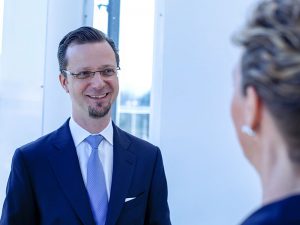
The B2B chemical company that serves to multiple end use markets was under pressure to quickly develop new sustainable products to capture the shifting demand for sustainable products and positively differentiate from competition. The task was to clarify market needs, design a strategy, and deliver substantial commercial results from the sustainable product sales within 2 years.
Customer:
The chemical company which has multiple plant locations in Europe with ca. 500 MM revenue serving mainly to customers in Europe and Middle East. It leverages a central R&D and core technologies to serve its customers in multiple end use markets.
Initial Situation:
The company’s business units, which are geared towards serving customers in different end markets, were often receiving conflicting and unclear sustainability requirements from their customers. The demand for sustainable offerings, time to market, product features and technologies, and willingness to pay were not clear. This made it difficult to develop a coherent strategy and implementation plan to achieve immediate commercial success.
On the company side, management did not have a clear strategy on which sustainability projects and technologies to initiate and prioritize with limited R&D, technical and marketing resources. The business units stated that market demand is unclear and therefore they did not commit to budgeted sustainable growth.
Furthermore, it was not clear if the proposed sustainable products can be produced with current process capabilities, and if not what kind adaptations and investments must be made.
Goals/ Tasks:
The inspirational goal was to be recognized as a key supplier of sustainable products to company’s existing customers. To achieve that it is proposed to increase its sales from sustainable products from 1 % to 10% of overall sales. Correspondingly, the company needed to increase the sustainable new product development (NPD) projects pool from 5% to 50% of the overall R&D initiatives in 2 years.
Measures and Implementation Steps:
The first step was to clarify customer insights regarding sustainability and the most important value drivers in order to translate them into unique product features with the help of in-depth customer and expert interviews, market research and design thinking methods.
 Internally, the Voice of Business (VoC) was collected from managers in the areas of sales, marketing, production, procurement, engineering, and technology. With this knowledge, it was possible to fully align NPD projects in terms of technology, product, and market.
Internally, the Voice of Business (VoC) was collected from managers in the areas of sales, marketing, production, procurement, engineering, and technology. With this knowledge, it was possible to fully align NPD projects in terms of technology, product, and market.
A gap analysis was conducted to determine the key competencies needed to successfully commercialize these initiatives on time and within budget. By linking front-end (market needs) and back-end (internal capabilities), value propositions and objectives are developed for each project.
A robust stage-gate project management process is introduced for the parallel implementation of the initiatives. Clearly defined metrics, KPIs and responsibilities are shared transparently across the organization.
Sponsors supported cross-functional teams using agile methodology for multi-faceted projects. Regular management views with predefined milestones help managing the projects and developing culture of learning and sharing.
The overall task also involved the creation of value-based sustainability pricing tools, market research, organizing customer sustainability days, webinars, and trainings for commercial teams.
Which successes and results did the interim management effort bring?
The company was able to quickly develop a well-defined and aligned NDP pipeline for each end-use industry with a clear purpose and roadmap. Cross-functional teams worked in an agile manner, incorporating multiple stages and functions together, to ensure faster and defect-free execution.
As a result, customers in France, Netherlands, Italy, and the Nordic region placed a higher priority on sourcing the company’s sustainable products than fossil-based offerings. The company achieved nearly 5x growth from sales of newly developed products by the end of 2 years.
Additionally, the acceleration of the initiative resulted in getting new ideas regarding sustainability topics, and multiple patent applications have been submitted.
Would you like more information or do you have similar challenges? Talk to us, we will be happy to help you!
Dr. Martin Ludwig Mayr, Managing Director
martin.mayr@gointerim.com
+49 89 20 500 8695
Feel free to share this post with your network as well.

